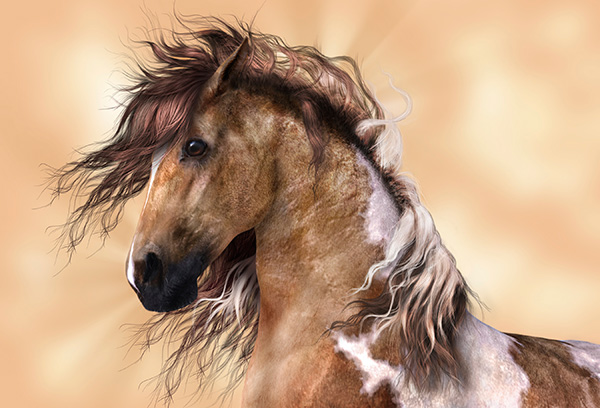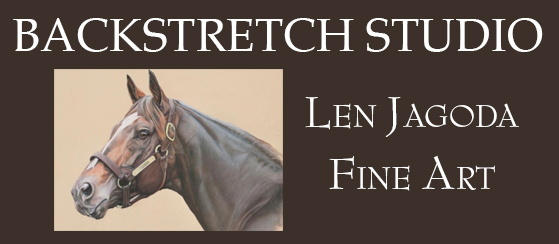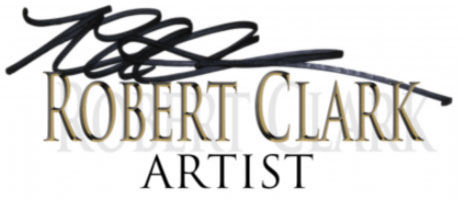
Museums
There are Museums dedicated to the Equine culture all over the world. We offer an exhaustive list of Western Museums, Rodeo Museums and Carriage Driving Museums throughout the United States and Internationally from Europe to Asia. Explore this fascinating world! Read more...

Paintings
Artists all over the United States and around the world specialize in a wide variety of styles and genres, portraying the Horse and the people who have them in their lives. There's also the highly unusual approach of giving the Horse a paint brush and letting him create their own art on canvas. Unbelievable but true. Many charities, rehoming and retirement organizations raise significant funds from Paintings devoted to horses.Read more...

Photography
There are people who specialize in different types of Equine photography from Portraiture to Rodeo, capturing live events. We offer an extensive resource of Photographers located all across the United States and around the world. The locations are only as a reference and photographers often travel extensively to perform their craft. Please contact the photographer directly regarding your specific location needs. Read more...

Sculpture
The ancient art of Sculpture is alive and thriving today. We offer a selection of Sculptors from the United States and Internationally. There are artists who use the expected mediums of bronze or marble, but there is also a fascinating trend to use drift wood and other natural mediums to capture the three dimensional form of the horse. Read more...

James Beck, Director, ArtWatch International, (revised 12/8/1992)
- All works of art have the inalienable right to live an honorable and dignified existence.
- All works of art have the inalienable right to remain in their original abode, whenever possible. They should be permitted to rest in their acquired homes without being moved to distant places: in galleries and museums, in private collections, in houses of worship, in public spaces, under protected and controlled situations as removed as much as possible from pollution, excessive variations of climate, and all forms of degradation.
- Works of art recognized as of the highest order should be regarded as belonging to the entire society of the world, the 'global cultural patrimony', not to a single entity, either local, institutional, or national, although the 'owners' would continue to have full custodial responsibility.
- The "owners" of the paintings and sculptures as well as other art objects, hold them under an enforceable constructive trust, for the benefit of the public.
- In the process of conserving works of art, ample room must also be provided for the new as well as for the conservation of the old, for otherwise we would risk fossilizing ourselves to the past. Decisions affecting art held in trust should be reviewable.
- The most distinguished art objects shall be specially designated 'world-class masterpieces', representing, perhaps, one object in a hundred among the finest cultural treasures (somewhat in the way that buildings are selected for "landmark" status). Prior to the restoration of any in this group of masterpieces, all proposed procedures would be subject to review by a court of competent jurisdiction after hearing testimony from specialists and representatives of the culture. Second opinions and sometimes third opinions would be sought.
- Under no circumstances should preservation and conservation techniques be employed that are essentially experimental in nature, except where the artwork is in imminent danger. In all other cases carefully controlled, fully documented testing is a prerequisite; findings, including photographs, must be made publicly available in a timely manner and at a reasonable expense. No restoration should be undertaken for the sake of curiosity or profit. If scholarly or scientific "discoveries" result from conservation techniques, they should be regarded as fortuitous byproducts, not as the raison d'etre of the intervention, as the artwork must not be considered an 'experimental laboratory'. Since every treatment, cleaning, or restoration has the potential of negative side effects, interventions should be taken sparingly, and with reversible techniques if possible, recognizing implicitly that in the future more effective and less damaging procedures may be devised. Restoration techniques should be subject to review before any restoration is undertaken.
- Masterpieces of the past should not be reproduced without clearly distinguishing original from copy, so that the integrity of the original is preserved. Efforts should be made to protect artists and their estates from violations of the intentions.
- Unified art works should not be divided or dissected, altered or mutilated, e.g., predella panels should not be separated from their altarpiece nor should individual pages be removed from a book of drawings. In principle, subsequent transformations, adjustments, reformulations added to the original statement should be left in tact as a mark of history.
- The stewardship of works of art, especially masterpieces of noted historical significance, should be subjected to free and open debate, and appropriate judicial review.
- The examination and maintenance of works of art must be provided on a regular basis and carried out by dedicated, trained professionals, certified by national and international standards, when feasible, after any objector has been given the right to be heard.
(signed) James Beck, Director, ArtWatch International
Equine paintings have been around for centuries, with some of the earliest known examples dating back to the cave paintings of Lascaux. Paintings of horses can be found in museums and galleries all over the world, and they are also popular among private collectors.
Equine paintings can be realistic or abstract. Realistic equine paintings often depict horses in a natural pose, such as grazing or galloping. Abstract equine paintings may be more stylized or geometric.
Equine paintings can be made from a variety of materials, including oil, acrylic, watercolor, and pastel. Oil and acrylic are popular choices for equine paintings, as they allow the artist to create a wide range of effects. Watercolor and pastel are also popular choices, but they are more delicate and require more care.
Some famous examples of equine paintings include:
- Whistlejacket by George Stubbs (1762)
- The Horse Fair by Rosa Bonheur (1853)
- The Red Prince Mare by Sir Alfred J. Munnings (1921)
Equine paintings are a beautiful and diverse art form. They can be used to depict the beauty and power of horses, as well as to explore more complex themes such as movement, freedom, and the relationship between humans and animals.
Here are some additional characteristics of equine paintings:
- Equine paintings often capture the horse's movement and grace.
- Equine paintings can be used to express a variety of emotions, such as joy, power, and beauty.
- Equine paintings can be used to tell stories, such as the story of a horse and its rider or the story of a particular horse breed.
- Equine paintings can be used to create a sense of place, such as a painting of a wild horse herd in the American West.
Equine paintings are a beautiful and expressive art form that can be enjoyed by people of all ages.
Please note: The artwork shown here are representative images and not necessarily those of the artists listed.
The locations are only as a reference since artists often travel for commissioned work. Please contact the artist directly regarding your specific location needs.
Featured Listings - Paintings
 604 Twin Lakes Road, Waverly Hall, GA 31831
604 Twin Lakes Road, Waverly Hall, GA 31831
ph: (706) 593-6786
Email: Leonardo_jay@earthlink.net

Len Jagoda’s art has garnered over 70 awards regionally and nationally. His works have been accepted to national and international exhibitions, including the Grand National four times. He has had the honor of portraying Derby winners, Triple Crown winner American Pharoah, two-time Breeder’s Cup Classic winner Tiznow, and many other champions and leading sires.
 137 E. Main St. Georgetown, KY 40324
137 E. Main St. Georgetown, KY 40324
ph: (321) 266-1009
Email: bob@robertclark.us

A lifetime of drawing and painting has established Robert Clark as an elite equestrian artist. Robert’s mastery as a painter and his passion for horse racing combine to create canvases that freeze a winning moment into a timeless masterpiece.
Paintings, Posters and Prints - General
UNITED STATES | International (click here)
Paintings - United States
Arkansas
California
Connecticut
Delaware
Georgia
- Ann Goble Fine Art
-
Backstretch Studio

604 Twin Lakes Road, Waverly Hall, GA 31831
ph: (706) 593-6786
Email: Leonardo_jay@earthlink.net

Len Jagoda’s art has garnered over 70 awards regionally and nationally. His works have been accepted to national and international exhibitions, including the Grand National four times. He has had the honor of portraying Derby winners, Triple Crown winner American Pharoah, two-time Breeder’s Cup Classic winner Tiznow, and many other champions and leading sires.
- Barbara Rush
- Julie Ferris
Kentucky
- Cross Gate Gallery
- Jaime Corum
- Jeaneen Barnhart Studio
-
Robert Clark

137 E. Main St. Georgetown, KY 40324
ph: (321) 266-1009
Email: bob@robertclark.us

A lifetime of drawing and painting has established Robert Clark as an elite equestrian artist. Robert’s mastery as a painter and his passion for horse racing combine to create canvases that freeze a winning moment into a timeless masterpiece.
Louisiana
Massachusetts
Minnesota
New Hampshire
New Mexico
North Carolina
Oregon
Tennessee
Texas
Virginia
Wisconsin

PAINTINGS - INTERNATIONAL

Paintings - International
Canada
Germany
Ireland
Serbia
United Kingdom
- Angela Davidson Art
- Charlie Langton
- Debbie Harris Sporting Art
- Denise Finney
- Elizabeth Armstrong
- Garth Bayley Art
- Hazel Morgan
- Horse Portraits Melanie & Nicholas
- Jacqueline Stanhope Fine Art Ltd.
- Jacquie Jones
- Jo Taylor
- Judi Kent Pyrah Equestrian Artist
- Lisa Miller Equestrian Artist
- Lydia Kiernan Equestrian Art
- Melanie Wright
- Sally Martin Fine Art
- Sue Mclachlan
- Susan Crawford
- Yaheya Pasha
Watch the video about the release of the book A Brush With Greatness about the works of painter Robert Clark. Then read about this relation to the horses and their owners and riders in the article An Artist's Life: Living Through Horses and Their people. You can have Robert Clark paint a portrait of your horse! Contact him at bob@robertclark.us and use the code CLARK2020 for a special price.
A Brush With Greatness is available on Amazon.

Photographer creates 3,000 square foot backdrop to capture stunning pictures of horses in all their glory
By Rob Preece
Read the original article on the Daily Mail UK
Strong and muscular but graceful when they move, horses have inspired artists and writers for centuries.
But these pictures show the animals as you've probably never imagined them before - posing for portraits in a professional photographer's studio.
And this isn't any ordinary studio - it's a 3,000 square foot backdrop and stage which the photographer, Lindsay Robertson, takes to stables in the back of his Transit van.
Mr Robertson, 58, from Edinburgh, designed the studio himself and revealed that it cost him a 'five-figure' sum to create.
To make the backdrop, he had to buy two enormous rolls of muslin before sewing them together in the only space he could find that was large enough - a railway station car park.
He then spent a month painting the muslin and rigged up a system of poles to raise it to a right angle. Next he built the 700 square foot stage upon which the horses stand for their portraits.

Read the original article on Wallpaper.com here...
by Nick Compton. Photos Courtesy Galerie Perrotin.
How do you get four horses most of the way up the Eiffel Tower? In the lift, two at a time, of course. We know this for certain because the Italian artist Paola Pivi has done it. And to otherworldly effect.
Read more: Horsing around: Paola Pivi reaches new heights at the Eiffel Tower































